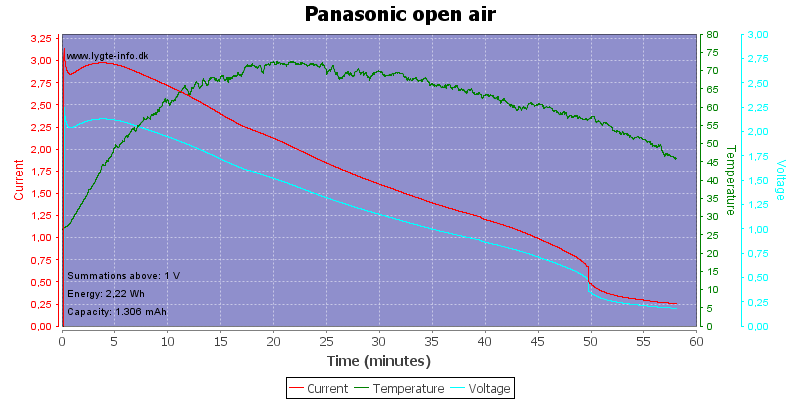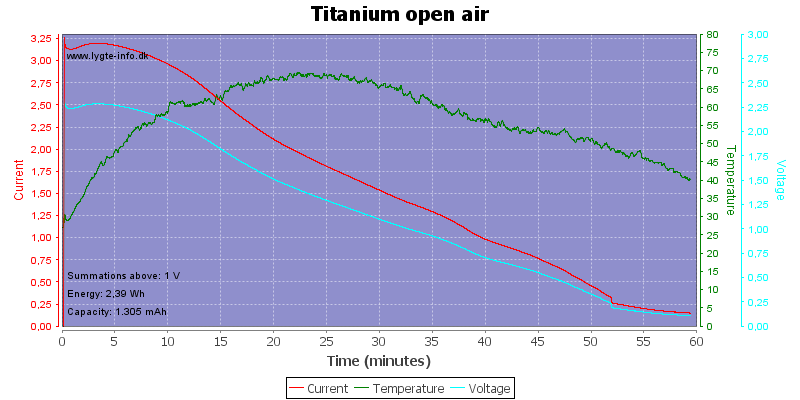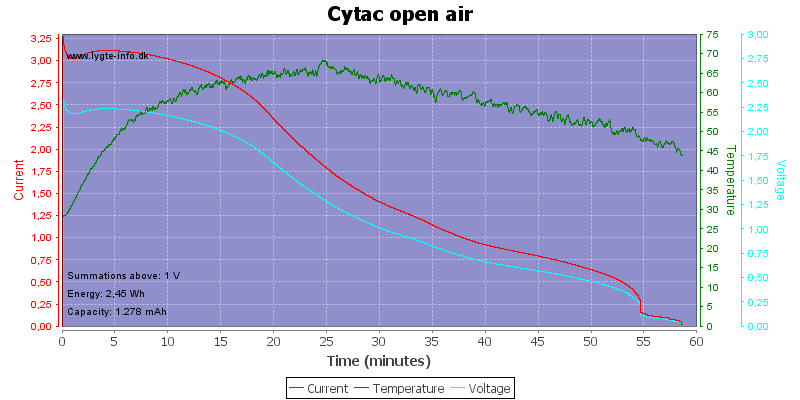Ok, I won't be trying this again. :sweat:
I ran the light without cooling on the Titanium Innovation cells until the PTC apparently engaged (occurred a little after ~20 mins into the run, as before on these cells).
Keep in mind this is a not exactly fair comparison to the Duracells at 3.5 mins, as the longer run gave everything a lot more time to heat up. Here are the temps: (first pass is immediately upon removing from the light as the drop in output began, second pass is ~25 secs later).
Duracell (3.5min) first-pass, from front to back: 68.4C/56.4C, 51.9C/46.3C.
Duracell (3.5min) second-pass, from front to back: 58.3C/50.3C, 49.9C/43.9C
Titanium Innovations (20min) first-pass, from front to back: 80.6C/73.6C, 72.4C/70.3C.
Titanium Innovations (20min) second-pass, from front to back: 77.6C/71.3, 69.4C/66.6C
I don't believe you can draw any real conclusions about the temperature at which the PTC engaged this way. It's possible both types of cells responded at the same point - but because the Duracell/Panasonic ramped so much more quickly, they also dropped more quickly (i.e. by the time I got everything out of the light and measured it). As you can tell from the later TI run, the temp of the cells remained elevated longer (as you would expect from the more gradual increase in heat of the light and batteries). As such, it is really impossible to know what internal temp triggered the PTC throttle-down.
As an aside, I will say the light was a LOT hotter to the touch when getting these cells out (compared to the 3.5min Duracell runs, where the light was still relatively quite cool to the touch).

Also, the wrapping of the cells had opened up near the positive terminals - slightly on rear cell, considerably on the front cell. Needless to say, I will not be doing any more of these runtimes without cooling!
The only way to know for sure what is going on would be to directly measure the temperature of the front cell while the light is operation, and see directly when the PTC engage. Given the wide time disparity here, my simple method doesn't really tell us much. As the more detailed analysis is beyond my capability to measure, hopefully HKJ (or someone else here) will be able to do it.
So, to summarize all of the above:
- the Duracell (and presumably Panasonic) cells heat up FAR more quickly than the Titanium Innovations cells in this setup.
- it is possible the Titanium Innovation cells are also tripping at higher heat levels, but the only real way to know is to directly measure temp under operation. This is beyond my ability at this point in time.







 Also, the wrapping of the cells had opened up near the positive terminals - slightly on rear cell, considerably on the front cell. Needless to say, I will not be doing any more of these runtimes without cooling!
Also, the wrapping of the cells had opened up near the positive terminals - slightly on rear cell, considerably on the front cell. Needless to say, I will not be doing any more of these runtimes without cooling!